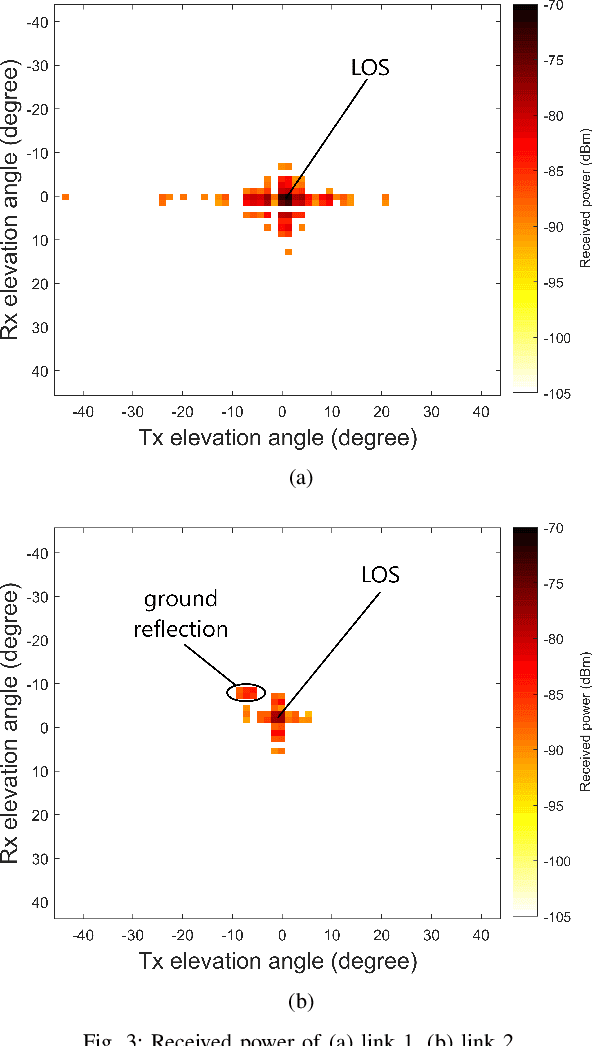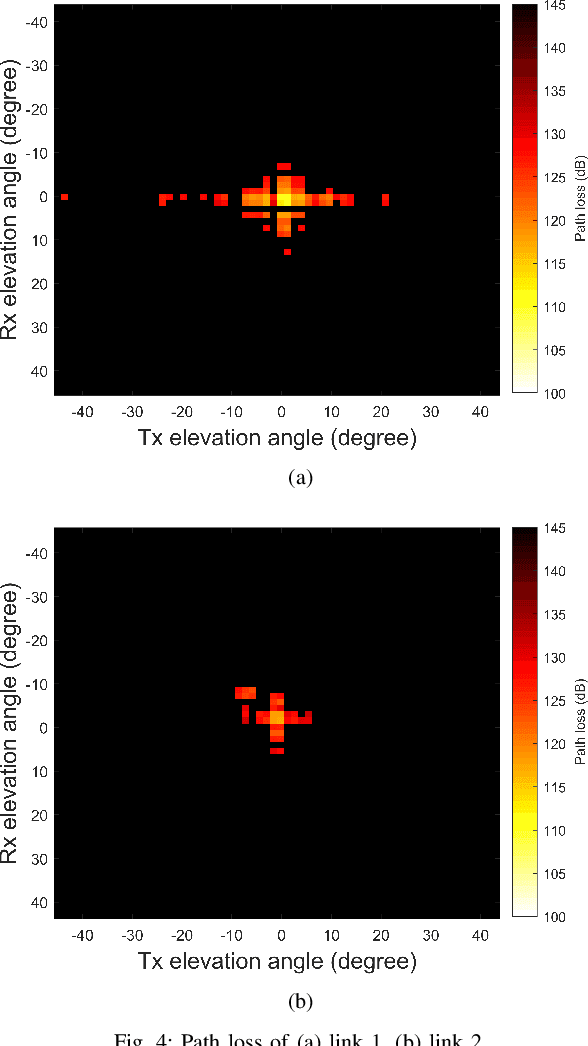Kairui Du
60 GHz Outdoor Propagation Measurements and Analysis Using Facebook Terragraph Radios
Sep 02, 2021



Abstract:The high attenuation of millimeter-wave (mmWave) would significantly reduce the coverage areas, and hence it is critical to study the propagation characteristics of mmWave in multiple deployment scenarios. In this work, we investigated the propagation and scattering behavior of 60 GHz mmWave signals in outdoor environments at a travel distance of 98 m for an aerial link (rooftop to rooftop), and 147 m for a ground link (light-pole to light-pole). Measurements were carried out using Facebook Terragraph (TG) radios. Results include received power, path loss, signal-to-noise ratio (SNR), and root mean square (RMS) delay spread for all beamforming directions supported by the antenna array. Strong line-of-sight (LOS) propagation exists in both links. We also observed rich multipath components (MPCs) due to edge scatterings in the aerial link, while only LOS and ground reflection MPCs in the other link.
Sub-Terahertz and mmWave Penetration Loss Measurements for Indoor Environments
Mar 03, 2021



Abstract:Millimeter-wave (mmWave) and terahertz (THz) spectrum can support significantly higher data rates compared to lower frequency bands and hence are being actively considered for 5G wireless networks and beyond. These bands have high free-space path loss (FSPL) in line-of-sight (LOS) propagation due to their shorter wavelength. Moreover, in non-line-of-sight (NLOS) scenario, these two bands suffer higher penetration loss than lower frequency bands which could seriously affect the network coverage. It is therefore critical to study the NLOS penetration loss introduced by different building materials at mmWave and THz bands, to help establish link budgets for an accurate performance analysis in indoor environments. In this work, we measured the penetration loss and the attenuation of several common constructional materials at mmWave (28 and 39 GHz) and sub-THz (120 and 144 GHz) bands. Measurements were conducted using a channel sounder based on NI PXI platforms. Results show that the penetration loss changes extensively based on the frequency and the material properties, ranging from 0.401 dB for ceiling tile at 28 GHz, to 16.608 dB for plywood at 144 GHz. Ceiling tile has the lowest measured attenuation at 28 GHz, while clear glass has the highest attenuation of 27.633 dB/cm at 144 GHz. As expected, the penetration loss and attenuation increased with frequency for all the tested materials.
28 GHz Indoor and Outdoor Propagation Analysis at a Regional Airport
Jan 07, 2021



Abstract:In the upcoming 5G communication, the millimeter-wave (mmWave) technology will play an important role due to its large bandwidth and high data rate. However, mmWave frequencies have higher free-space path loss (FSPL) in line-of-sight (LOS) propagation compared to the currently used sub-6 GHz frequencies. What is more, in non-line-of-sight (NLOS) propagation, the attenuation of mmWave is larger compared to the lower frequencies, which can seriously degrade the performance. It is therefore necessary to investigate mmWave propagation characteristics for a given deployment scenario to understand coverage and rate performance for that environment. In this paper, we focus on 28 GHz wideband mmWave signal propagation characteristics at Johnston Regional Airport (JNX), a local airport near Raleigh, NC. To collect data, we use an NI PXI based channel sounder at 28 GHz for indoor, outdoor, and indoor-to-outdoor scenarios. Results on LOS propagation, reflection, penetration, signal coverage, and multi-path components (MPCs) show a lower indoor FSPL, a richer scattering, and a better coverage compared to outdoor. We also observe high indoor-to-outdoor propagation losses.
 Add to Chrome
Add to Chrome Add to Firefox
Add to Firefox Add to Edge
Add to Edge